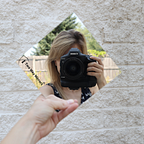How Does a Barcode Scanner Work?
The science behind the numbers and lines
You may not think about it, but we use barcode scanners every day. Whether this is at a store, Events, Movies, Traveling, Advertising, and even at the library. You may not even know it, but we use barcode scanners every day. Next time you go to the grocery store and use the Self Checkout, look at the barcode scanner. Do you see anything that may catch your eye or spark your interest?
You may think that a barcode is a box of lines, spaces, and numbers. Little do you know, there is so much more to a barcode scanner than what meets the eye. This system keeps track of inventory and other important information that is needed.
In June 1974, Wrigley Company Chewing Gum was the first product to have the barcode system. Let’s break down what the code means. At the bottom of the code, you will notice 12 numbers. The first six numbers are the manufactures identification number. The five numbers after those would be the item number that represents the idea. The last number in the series is the Check Digit. This enables the scanner to see if the code was scanned the right way or not.
The barcode scanner consists of three parts. These are the illumination system, the decoder, and the sensor. The scanner ‘scans’ the black and white lines with red light; then, this is sent to the decoder. The decoder interprets the signal, breaks down the digits, and converts it to text. Then the text is sent to computer software that holds all the selling information.
There are two types of Barcode scanners, 2D and linear. The one that we see, and the most common, is the linear code. A different kind of bar code that you may overlook is a QR code. The space between each black line is where the data is stored, which keeps track of what is sold.
Now, if you look at a barcode scanner, you will notice a few things.
The mirror that you see right behind the glass is exact. This is called a First Surface Mirror. It is a very “high precision ultra-flat mirror with the coating on the face of the glass to ensure accuracy.” A simple regular mirror would not work well because it has a double reflection. A double reflection on the reflective side is known as ghosting.
A standard mirror could work, though it will give the customers a lot of frustration. The scanner will not read the code as or even at all. Manufactures never use standard mirrors unless needed. With the high-precision optical mirror’s help, the scanner can read the code very and from all angles. This helps a lot with customer satisfaction with scanning the barcode themselves. The scanner takes a photo of the barcode and then sends it away.
To scan the barcode, though, the scanner will need to see the entire code. “However, the imager can’t always be properly positioned directly in front of the barcode due to limited space in the interaction environment”.
